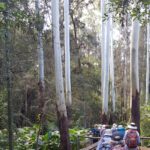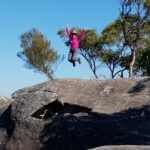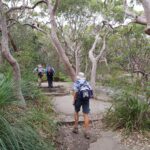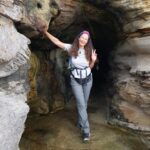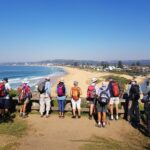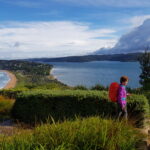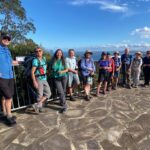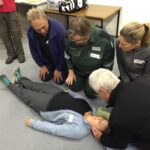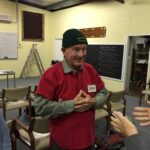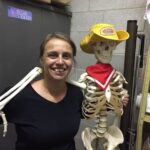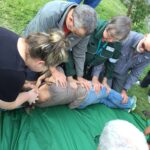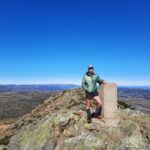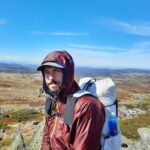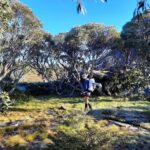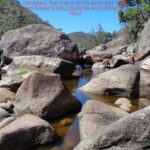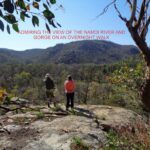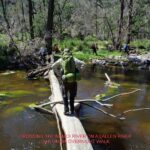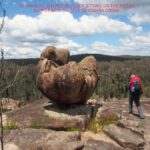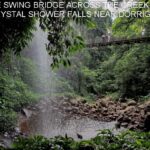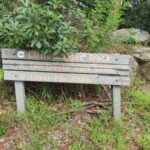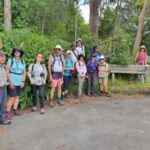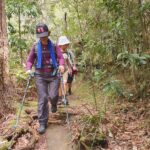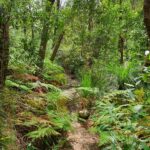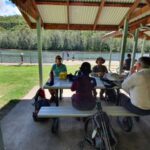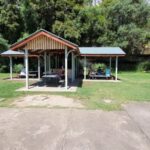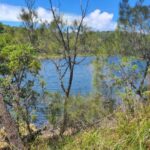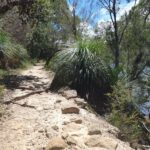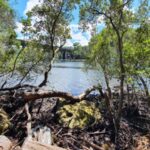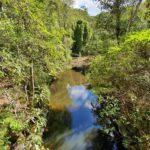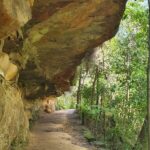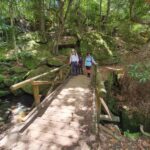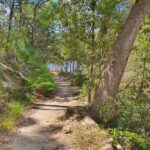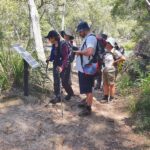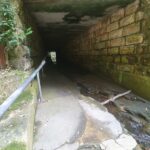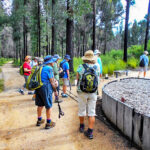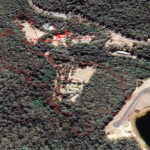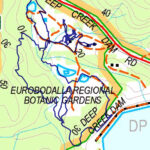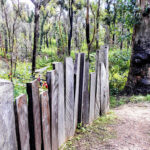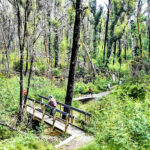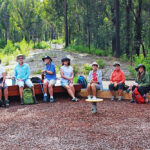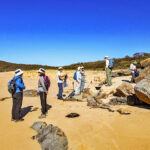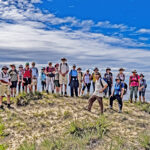Marie Byles Commemorative Walks , The Bush Club, Walks Report by Astrid van Blerk & Kevin Yeats, Images by Astrid van Blerk and Ian Evans
The Bush Club is one of the major walking clubs in Sydney, which offers its currently over 850 members a huge variety of activities such as day and pack walks, cycles, and multi-day trips to explore areas further away. It is often referred to as “the friendly club” – its culture is supportive and inclusive, walks range from relatively easy to challenging and adventurous so everyone can find something that suits them individually, and there is a special focus on encouraging new leaders which allows interested members to try out new skills and share their favourite walks with others. Whenever you meet a Bush Club group on the track you will notice that the atmosphere is happy, open and relaxed – we sure have mastered the art of having fun outdoors! Another telltale sign that the club is healthy and thriving is how much resilience and optimism it showed in these challenging times of the pandemic. For example, during the 2019/20 financial year despite the Covid shutdown which prevented group walking for several weeks, the club managed to complete an astonishing 446 activities – predominantly weekday day walks with an average number of 9.5 paricipants each. What a wonderful way to keep moving and breathing fresh air, and to maintain one’s sanity and social contacts at the same time…!
One of the many interesting collaborative projects that the club offered to its members recently was created to commemorate its co-founder Marie Byles, who together with Paddy Pallin brought the club into existence in 1939.
Marie Byles (1900 – 1979) was the first woman to practice law in NSW, a mountaineer, explorer and avid bushwalker, a committed conservationist, feminist, author and an original member of the Buddhist Society in NSW. As a teenager at her parent’s holiday retreat at Palm Beach, she would look through her telescope across Broken Bay to the bushland on the Central Coast. She would later campaign successfully to place the former coal reserve on the Bouddi Peninsula under public ownership and in 1935 Bouddi Natural (later National) Park was formed, with Marie being elected a trustee of the board that managed the park. By 1938, she had built the house she called ‘Ahimsa’ (nonviolence), on her 3½ acre bushland property at Cheltenham, which she later bequeathed to the National Trust.
To honour Marie Byles’ achievements and contributions to the club, a series of 7 walks, ‘From Buddha to Bouddi’, were held, starting on Marie’s birthday (8th April), from ‘Ahimsa’, Cheltenham and finishing at Marie Byles Lookout in Bouddi. The walks passed through 5 National Parks, numerous council parks and reserves, as well as beaches and important wetlands, and all were suitable for public transport. Walks ranged from an ‘octogenarian friendly’ grade 2 to a more demanding grade 4, as follows:
1. Cheltenham to Lindfield via ‘Ahimsa’, GNW along Lane Cove River to Fullers Bridge, Little Blue Gum Creek, Primula Oval, Paddy Pallin Reserve, Lindfield (19km grade 3).
2. Lindfield to Seaforth Oval via Seven Little Australians Park, Two Creeks Track, Flat Rock Beach, Magazine Track, Natural Bridge, The Bluff and Bantry Bay (21km grade 4 – actual walk reversed for transport convenience).
3. Seaforth Oval to Manly via Manly Dam Reserve, Burnt Bridge Creek, Clontarf Beach, Harbour Walk to Manly (19km grade 3).
4. Manly to Collaroy via Queenscliff with side trip to the wormhole, Freshwater, Curl Curl, Dee Why, Long Reef (11km grade 2)
5. Collaroy to Avalon via Warriewood, Mona Vale, Newport, Crown of Newport Reserve, Bilgola and Avalon Beaches (17km grade 3).
6. Avalon to Palm Beach via Angophora Reserve, Clareville Beach, Bangalley, Whale Beach, Palm Beach and Barrenjoey Head (20km grade 3).
7. Palm Beach to Wagstaffe by ferry, then circuit walk in Bouddi NP visiting Hardy Bay, Allen Strom Lookout, Rocky Point trail, Mt Bouddi, Maitland Bay, Marie Byles Lookout and Pretty Beach (19km grade 3).
This walks series was a great success overall, and there are already calls to repeat the whole lot again next year. A special thanks goes to our wonderful thoughtful and innovative leaders who each led a section, in order: Jenny Donoghoe, Fiona Sonntag, John Hungerford, Bob Taffel, Astrid van Blerk, Joy Bell and Carole Beales-Evans. Also, to quote Carole, thanks to the amazing walkers who made it so special!
To find out more about the Bush Club, please see here. Membership is open to those over 18. To be part of The Bush Club, sign up as a prospective member. Our leaders will help you select activities which will suit you and your fitness. After completing three membership qualifying walks, you can apply to become a full member. We are always looking forward to welcome new members – see you on the track!
